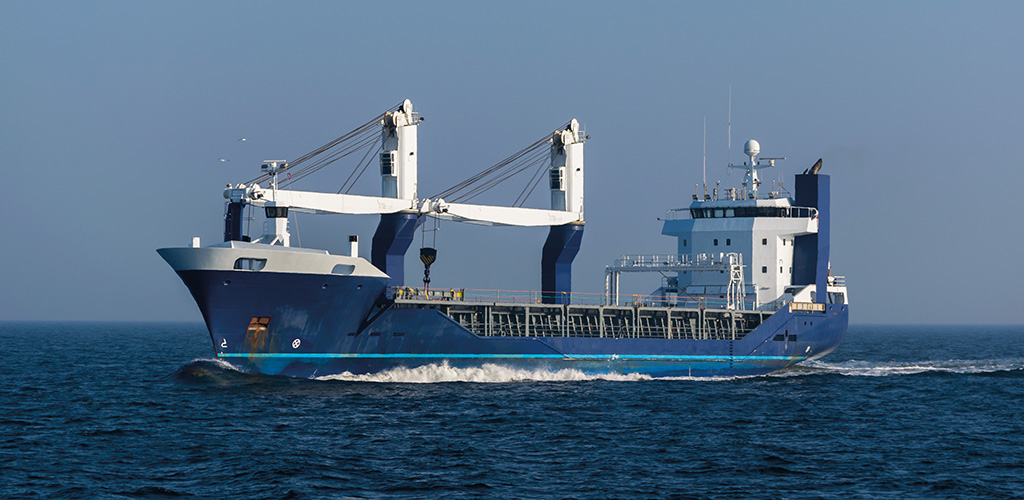Maritime Consultancy Expects Heavy-Lift Fleet Growth in 2023

By Dr. Ferenc Pasztor
_10.png) For the first time in some years, the total multipurpose vessel fleet recorded growth over the 12 months of 2022 and is likely to do so again this year. This is due to the extremely low demolition sales reported over 2022, which was one of the worst in terms of demolition candidates.
For the first time in some years, the total multipurpose vessel fleet recorded growth over the 12 months of 2022 and is likely to do so again this year. This is due to the extremely low demolition sales reported over 2022, which was one of the worst in terms of demolition candidates.
This was fairly unsurprising given charter rates were reported at peak levels.
However, even with those rates, and the impending IMO regulations on emissions and carbon reductions, we had expected a few more vessels to head for the beaches.
As the charter market continues to decline over 2023, scrapyards empty and emission regulations become clearer, Drewry’s expectations for demolition candidates start to rise again to at least parity with 2019, even if most of these vessels are less than 10,000 deadweight-tonnes and not heavy-lift capable.
That said, the MPV and heavy-lift fleet has two distinct halves. Demolition candidates are expected to rise much more quickly for the non-heavy-lift capable fleet, whereas the majority of newbuilding orders are for larger heavy-lift vessels. This leads to fleet growth of 1.2 percent for 2023 compared with 2022. The non-heavy-lift fleet, however, effectively stagnates, while heavy-lift capable vessels are expected to see a rise of 2.5 percent in deadweight terms.
Even with this positive outlook for fleet growth as 2022 drew to a close, the outlook for the multipurpose and heavy-lift fleet was significantly less positive than it had been at the same time in 2021. At that point the first reports of the Omicron variant of Covid-19 were in the news but the global economy was on a positive growth trajectory and our outlook was cautiously optimistic.
FAST FORWARD
What a difference a year makes. The conflict in Ukraine coupled with continued (or recurrent) Covid-19 infections, particularly in China, increasing inflationary pressures and a rising debt burden in many developing countries have produced a much more subdued outlook for the maritime sector.
Last year started with charter rates in all three main dry cargo sectors at unprecedently high levels, peaking over the first quarter of 2022. At that point container rates were 900 percent higher than the second quarter of 2020 (the lowest point in the market over recent years), bulk carrier rates were 200 percent higher and MPV rates were almost 150 percent up. But from that point there was only one way for them to go.
From the peak at the beginning of the year charter rates in the container sector had lost almost 80 percent of their value by the end of November 2022, while handy bulk carriers had lost 50 percent. The MPV sector, however, did better – at least for the heavy-lift-capable sector – with long-term charter rates down just 10 percent from the peak.
The reasons behind this are largely to do with the demand for these vessels and the particular mix of cargoes that they can lift. The MPV sector benefitted for much of the year from the spill over cargo that was a by-product of supply chain issues.
As those issues have been unwound, project cargoes – from both the renewables and oil and gas sectors – have underpinned the loss in demand. Going forward in 2023, Drewry expects rates to continue this deteriorating trend as the competition for breakbulk and project cargo increases in an ever-weakening global economy.
 Dr Ferenc Pasztor is deputy head of research at Drewry Shipping Consultants with more than 12 years' experience in academic research and shipping. On joining Drewry in 2022, he took responsibility for assisting the development of research products covering the multi-purpose vessel market, ports and terminals, container equipment and ship operating costs. Pasztor will be presenting a special MPV Outlook session on the main stage at Breakbulk Middle East 2023 in Dubai. Click here for the full event programme.
Dr Ferenc Pasztor is deputy head of research at Drewry Shipping Consultants with more than 12 years' experience in academic research and shipping. On joining Drewry in 2022, he took responsibility for assisting the development of research products covering the multi-purpose vessel market, ports and terminals, container equipment and ship operating costs. Pasztor will be presenting a special MPV Outlook session on the main stage at Breakbulk Middle East 2023 in Dubai. Click here for the full event programme.

